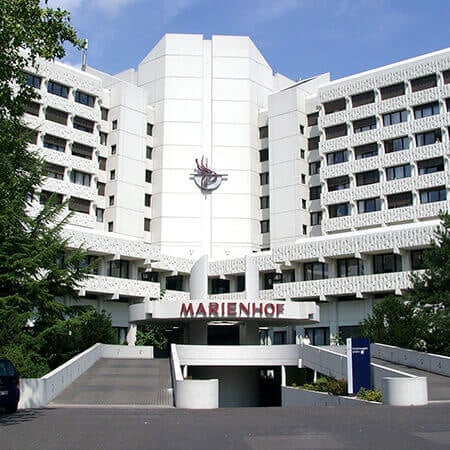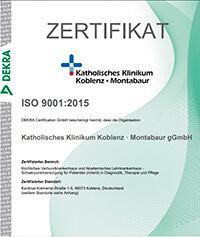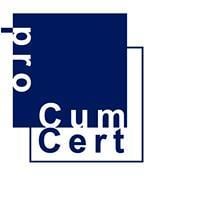Femoroacetabular impingement (hip impingement) is one of the main causes of pain in the hip joint. If untreated, it leads to the development of coxarthrosis, which is a progressive destruction of the hip joint. Hip impingement is one of the most common causes of osteoarthritis deformans in young people.
To avoid irreversible changes in the joint, pathology should be treated as early as possible. The impingement can be eliminated using surgical techniques. The countries with advanced medicine offer minimally invasive arthroscopic surgical procedures, which help get rid of pain forever, return to physical work or sports training.
Content
- Types of impingement
- Diagnostics
- Conservative therapy
- Surgical treatment
- Effectiveness of hip impingement treatment abroad
- Why is it worth undergoing treatment abroad
- Treatment in Europe at an affordable price
Types of impingement
Hip impingement is not a separate disease, but a pathomechanical process. The term means that the anatomical structures in the hip impinge (impingement), which leads to gradual wear of the joint. Pathology was first described by German doctors more than a century ago. In the twentieth century, the pathogenesis of the disease was described in detail by R. Ganz.
There are two types of hip impingement in orthopedics:
- Cam-type is caused by the change in the shape of the femoral head (normally it should be spherical).
- Pincer-type is caused by an increase in the area of coverage of the femoral head with the acetabulum of the pelvic bone.
Pure types are detected in only 10% of patients. In 90% of cases, the two options of impingement are combined in certain proportions.
Cam-type
The irregularly shaped femoral head constantly impinges with the protruding edge of the acetabulum during movements of the lower limb. In the overwhelming majority of cases, the pathology is diagnosed in men. It occurs 14 times less often in women. The disease affects young people. The average age of the patients suffering from this disease is 30 years.
Causes:
- Juvenile epiphysis of the femoral head.
- Legg-Calve-Perthes disease.
- Post-traumatic deformity of the proximal femur.
- Femoral retroversion.
- Impaired growth processes of the epiphysis of the thigh.
Pincer-type
This type of impingement is characterized by a local or general increase in the acetabular coverage of the femoral head. This results in the formation of a linear contact between the edge of the acetabulum and the femoral neck. The pathology develops in women 3 times more often than in men. Symptoms usually manifest themselves later: the average age of patients is 40 years. The size of the defect in the cartilaginous part of the thigh is 2-3 times less than in the cam-type.
The main causes of the disease are as follows:
- Congenital hip shortening.
- Post-traumatic changes in the acetabulum.
- Hip dysplasia.
- Legg-Calve-Perthes disease.
- Juvenile epiphyseolysis of the femoral head.
- Previous surgery on the hip joint socket.
Diagnostics
Hip impingement has no specific symptoms. Pain in the hip joint may indicate a large number of a wide variety of pathologies.
Diagnostics begins with a clinical examination of the patient. The doctor uses provocation tests to detect impingement in the joint. An experienced specialist can identify impingement even prior to using instrumental diagnostic methods.
However, diagnoses based on clinical examination are usually not made in modern orthopedics. Even if the fact of the presence of pathology is established, it is necessary to determine the type, causes, and mechanism of the impingement formation.
X-ray is usually the very first examination prescribed to the patient. In addition to the standard anteroposterior projection, Lauenstein projection, Dunn projection, and Lecuesen-de Sese projection can also be used to obtain images. With the correct X-ray imaging, the sensitivity of the method in detecting impingement reaches 90%.
Developed countries often use more accurate diagnostic tests such as computed tomography (CT) and magnetic resonance imaging (MRI).
CT scanning is considered the best diagnostic method. With its help, doctors create a 3D digital model of the joint, can test it for impingement, plan the operation, and also perform it virtually in order to assess future results and choose the best treatment method.
MRI is worse than CT for scanning such dense tissues as bone and cartilage. However, the method is often used to clarify the origin of impingement syndrome. Doctors can detect pathology of the articular lip, the presence of subchondral cysts, thickening of the joint capsule, bone edema, synovitis, tendinopathy of the gluteus medius and adductor muscles. In orthopedics in developed countries, magnetic resonance arthrography is often used. The diagnostic method involves the injection of a contrast agent into the joint. It is 3 times more accurate than the conventional MRI.
Developed countries also use special diagnostic examinations in order to diagnose hip impingement even prior to the manifestation of the very first symptoms. Delayed gadolinium-enhanced MRI (dGEMRIC) determines the condition of the cartilage. Doctors can detect the first manifestations of arthrosis, even if the hip joint is not yet painful.
Conservative therapy
Conservative treatment of the hip usually does not solve the problem of impingement once and for all. It is carried out on an ongoing basis. The main goals are the improvement of the quality of life by relieving pain, and slowing down the degeneration of the articular cartilage. It is necessary to prevent the development of osteoarthritis, because with this pathology the patient is highly likely to require hip replacement.
Below are the options of conservative treatment for hip impingement:
- Limited physical activity.
- Exclusion of any movements that may provoke pain.
- Use of orthoses that restrict painful movements.
- Therapeutic exercises.
- Intake of nonsteroidal anti-inflammatory drugs.
In case of pathology of the cartilaginous part of the Iliac crest, intra-articular glucocorticoid injections can sometimes be performed.
Surgical treatment
Hip surgery is the best way to restore the joint affected with impingement.
A surgical intervention can be performed using both open access (through a large incision) and arthroscopy. The manipulations performed by doctors differ depending on the anatomical features of the impingement. In any case, the main goal is to prevent further impingement so that the patient does not suffer from pain, can walk normally and avoid the development of osteoarthritis.
The surgical treatment of impingement with excision of the greater trochanter and surgical hip dislocation can be performed for:
- Posterior cam-type impingement.
- Generalized enlargement of the acetabular coverage.
In case of idiopathic (unclear origin) retroversion (bending back) of the glenoid cavity, doctors additionally perform reorientation operations on the pelvic component of the hip joint.
The surgeons in developed countries increasingly perform operations using laparoscopic techniques. Doctors make several short incisions, through which they insert thin long instruments and a video camera with lighting. The arthroscopic technique allows the doctors to perform remodeling operations for:
- Restoration of the spherical shape of the femoral head.
- Increasing the offset of the femoral neck.
- Debridement ("resurfacing") and refixation of the cartilaginous lip (to preserve its suction ability, to ensure the stability of the hip in the glenoid cavity).
- Plastic surgery of the acetabular labrum with an autograft (with the patient's own tissues, for example, the fascia lata).
To perform plastic surgery of the acetabular labrum, the arthroscopic approach can be supplemented with a small incision in the thigh. The rest of the manipulations are only minimally invasive. Such operations give results no worse than with open surgery. However, they have many advantages:
- Safe for health.
- Associated with less trauma rate.
- Patients recover faster.
- Patients spend less time in the hospital.
- Rehabilitation is easier.
- Person can return to physical work or sports activities earlier.
With all the advantages of minimally invasive interventions, countries with poorly developed medicine still perform most of the operations using open surgical access. The doctor makes a large incision in the hip joint, and performs manipulations to remove the impingement under direct image guidance.
It is possible to eliminate impingement using this method, but open surgery is unsafe for health. The risk of developing complications reaches 20%. The most common are the formation of a false joint of the greater trochanter, aseptic necrosis of the femoral head, chronic pain due to the presence of metal in the joint.
At the same time, open interventions are technically simpler. Even young surgeons with poor experience can perform them. When performing arthroscopic interventions to eliminate impingement, the results are highly dependent on the experience of the physician. The main problem is the difficulty of controlling the volume of the performed resection. With low qualifications or insufficient experience, the doctor may remove too much or too little tissue, which will lead to insufficient or excessive correction of the impingement. In addition, an inexperienced physician can damage the lateral femoral cutaneous nerve.
To undergo minimally invasive impingement treatment with minimal health risks, you can go abroad. In countries with advanced medicine, arthroscopy is the main method of performing hip joint surgery. You will be able to get rid of impingement quickly, reliably, without health risks, with a quick return to physical work and sports activities.
Effectiveness of hip impingement treatment abroad
In the natural course of the pathology, the prognosis is unfavorable: the pain increases, limits the patient's physical activity, and after a few years, osteoarthritis develops. As a result, without the timely surgical intervention, a person may lose a joint. It will have to be replaced with an artificial endoprosthesis.
However, with timely treatment, the pathology can be completely eliminated. The best long-term results can be achieved in the following patients:
- Those who do not have secondary pathological changes in the cartilaginous part of the joint at the time of treatment (no signs of arthrosis).
- More than 50% of the joint space is preserved.
- Size of the joint space is more than 2 mm.
- Young age of the patient.
- Short period of clinical symptoms (pain in the hip joint).
To get the best results, surgical treatment should be performed as early as possible. Ideally, even before the onset of severe pain, as soon as the impingement is detected during instrumental diagnostics. Early treatment is especially important in young patients.
The studies conducted in Europe have demonstrated the high efficiency of surgical treatment of young athletes with hip impingement. After the operation, they not only got rid of pain, but also achieved their previous athletic performance.
Why is it worth undergoing treatment abroad
The quality of orthopedic treatment depends on the physical condition of the patient in the long term after the operation: will the pain persist, will physical activity and work capacity restored, will the person be able to return to training, will the arthrosis progress tens of years after surgery.
To get the best results with minimal health risks, you can go abroad. The treatment in developed countries offers the following benefits:
- Accurate diagnostics: doctors can determine the cause of the impingement and choose the best method to correct it.
- Most surgical interventions are performed using minimally invasive techniques, namely, arthroscopy.
- Speedy recovery and low risk of complications.
- Experience and skill of physicians: a key factor in the outcome of arthroscopic hip surgery.
- Comprehensive rehabilitation will allow the doctors to fully restore the function of the patient's limbs.
- Successful treatment of athletes: a few months after surgery, a person can return to maximum sports loads.
Treatment in Europe at an affordable price
To undergo hip impingement surgery in one of the European hospitals, please use the Booking Health services. On our website, you can see the cost of treatment in different hospitals and compare prices in order to book a medical care program at an affordable price. The treatment for hip impingement in a European hospital will be easier and faster for you, and the cost of treatment will be lower.
You are welcome to leave your request on the Booking Health website. Our specialist will contact you and provide a free consultation on treatment in Europe. Booking Health will take care of the organization of your trip abroad. We will provide the following benefits for you:
- We will select a hospital for treatment in Europe, whose doctors specialize in the treatment of hip impingement syndrome and achieve the best results.
- We will solve the problem of the language barrier and help establish communication with the doctor of the department of orthopedics.
- We will reduce the waiting time for the medical care program. You will undergo treatment on the most suitable dates for you.
- We will reduce the price. The cost of treatment in European hospitals will be lower due to the lack of overpricing and additional coefficients for foreign patients.
- We will help you with all organizational issues: we will draw up documents, meet you abroad and take you to the hospital, book a hotel, provide interpreting services.
- We will prepare a medical care program and translate medical documents. You do not have to repeat the previously performed diagnostic procedures.
- We will help you keep in touch with the hospital after treatment in Europe.
- We will arrange additional diagnostic examinations and treatment in a European hospital, if required.
- We will buy medicines abroad and forward them to your native country.
The world's leading doctors will take care of your health. The Booking Health specialists will help reduce the cost of treatment, organize your trip, and you will only have to focus on restoring your health.
Authors:
This article was edited by medical experts, board-certified doctors Dr. Nadezhda Ivanisova, and Dr. Bohdan Mykhalniuk. For the treatment of the conditions referred to in the article, you must consult a doctor; the information in the article is not intended for self-medication!
Our editorial policy, which details our commitment to accuracy and transparency, is available here. Click this link to review our policies.














